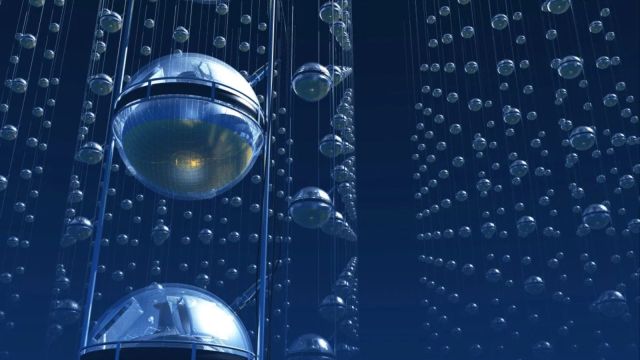Stay updated with the latest - Click here to follow us on Instagram
China installs deep-sea detector to hunt mysterious ‘ghost particles’
Neutrinos, often called 'ghost particles', are subatomic particles that travel through space but barely interact with anything.
 Neutrinos, often called “ghost particles”, are subatomic particles that travel through space but barely interact with anything. (Photo: The Institute of High Energy Physics, Chinese Academy of Sciences)
Neutrinos, often called “ghost particles”, are subatomic particles that travel through space but barely interact with anything. (Photo: The Institute of High Energy Physics, Chinese Academy of Sciences)Chinese scientists have placed special detectors deep in the South China Sea to explore the possibility of building a huge underwater observatory, reported SCMP. Their goal is to find neutrinos—tiny, nearly invisible particles that come from outer space and may hold clues about the origins of the universe.
The Institute of High Energy Physics in Beijing, which is leading the project, announced on Wednesday that last month, scientists placed their equipment 5,250 feet underwater using a deep-sea submersible called Shenhai Yongshi (Deep-Sea Warrior).
The setup includes highly sensitive detectors and a special LED light source for calibration (a process to ensure accuracy). The detectors have been connected to China’s national underwater scientific observation network, which supplies them with power and allows them to send back data.
Scientists are now waiting for these detectors to spot the faint flashes of light that appear when neutrinos pass through the deep ocean, as per SCMP.
What are Neutrinos and why do they matter?
Neutrinos, often called “ghost particles”, are subatomic particles that travel through space but barely interact with anything. They pass through planets, people, and even solid rock as if nothing is there.
Scientists are particularly interested in neutrinos because they can help track down the sources of cosmic rays—powerful radiation that comes from deep space. These cosmic rays are linked to extreme space events, such as exploding stars (supernovae) and colliding galaxies.
Since neutrinos don’t get affected by magnetic fields, they move in straight lines from their source, unlike other space particles. This makes them like messengers from the farthest parts of the universe, helping scientists map out where cosmic rays come from.
China’s plan for the world’s largest Neutrino observatory
The detectors in the South China Sea are part of an ambitious plan to build the High-energy Underwater Neutrino Telescope (HUNT). If completed, it will be the largest underwater neutrino observatory in the world, covering a massive area of 30 cubic kilometres.
The Beijing institute stated, “The stable operation of the prototype detectors marks a significant step forward in our preliminary research for the HUNT project. Once complete, it will position China at the forefront of neutrino astronomy.”
Global search for ghost particles
China is not the only country racing to detect neutrinos. Other major neutrino observatories include:
- Baikal-GVD (Russia) – Located in Lake Baikal, covering 0.5 cubic km
- IceCube (Antarctica) – A frozen observatory under 1 cubic km of ice
Both are set to expand to 8 cubic km, but Chinese researchers believe a minimum of 30 cubic km is needed for reliable results.
Besides HUNT, another Chinese project, Trident (Tropical Deep-sea Neutrino Telescope), is also in progress. Led by Shanghai Jiao Tong University, this project has been testing detectors at a depth of 3,500 metres since 2021 and aims for an observatory 8 cubic kilometres in size, as per SCMP.
More than a dozen Chinese universities and research institutes, including Ocean University of China, the Institute of Acoustics in Beijing, and the University of Science and Technology of China, are involved in HUNT’s feasibility study.
Scientists hope that once fully built, these deep-sea telescopes will capture neutrinos from space.
(With inputs from South China Morning Post)
- 01
- 02
- 03
- 04
- 05































